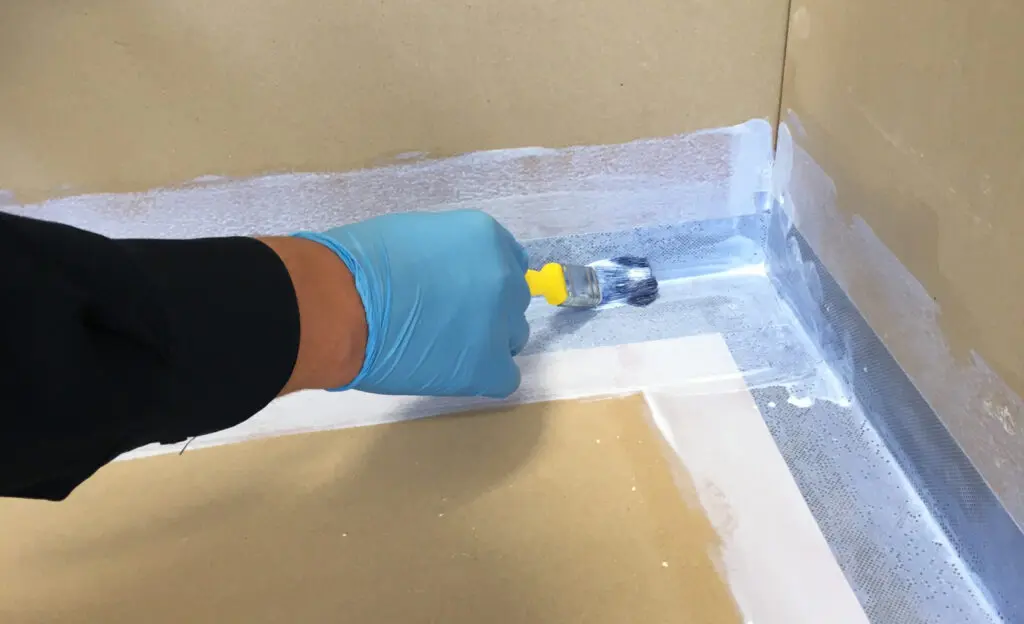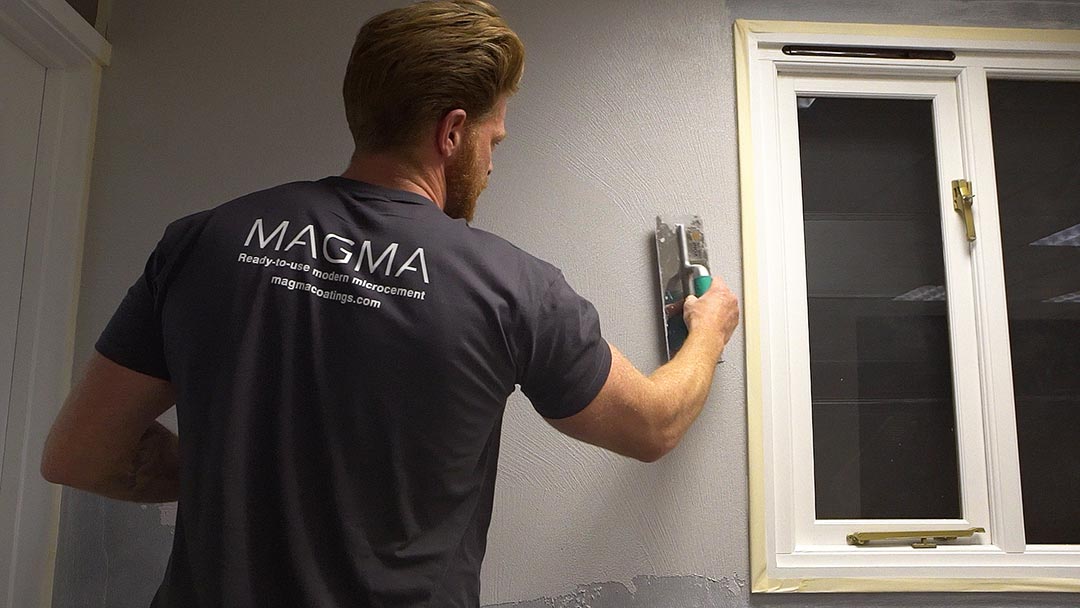An explanatory and detailed guide for architects, designs and specifiers
It is commonly accepted that a wet room must be made waterproof to a high standard, but there is some disagreement over how to treat bathroom areas. In this article, we look at the advice stated in British Standard BS 5385-1:2018, which advises waterproofing bathrooms in certain circumstances and look at what this means in real terms.
The British Standard clearly defines that tanking should always be in a wet room. However, it also advises using tanking and water-resistant materials in powerful domestic showers, communal showers and swimming pool areas.
Therefore, in areas where the surface finish may repeatedly come in contact with water, such as in bathrooms or showers (that may not have the opportunity to dry between use), it’s important to waterproof it by tanking. This will help prevent structural damage and protect the integrity of the installation over time. Tanking is an effective way to ensure no water gets through and causes long-term issues and an increased chance of risk.
For areas subject to occasional wetting, for example, domestic low-pressure (non-power) showers, the British Standard indicates that a waterproofing tanking system may be considered for water-sensitive backgrounds such as Plasterboard.
However, although not compulsory, the guidance says, “The use of impervious grouts and adhesives is no substitute for a tanked installation” Therefore, in other words, if you want to be sure that your bathroom will not leak then the room should be tanked. It is essential to take extra care when using a bathroom or shower located on a higher floor or living in an apartment with other people living beneath the space.
Microcement Bathrooms, Wetrooms & Steamrooms
Due to the numerous aspects that must be considered to create a watertight bathroom, shower room, steam room, or wetroom with a microcement or smooth resin-type finish, its important to understand the requirements to avoid any issues in the future.
Many microcement products note that they are fully waterproof. However, this is not always the case. Therefore, there are many important elements to consider and check before choosing this type of finish, so should query these elements carefully before considering this type of finish.
Is the Microcement system fully waterproof and suitable for the intended use?
Ensure that every element of the microcement system is fully waterproof and not compromised by water/moisture ingress. Sometimes, the thin sealers applied to the surface provide a high-resistance waterproof coating. If these are damaged, they can let in water and be detrimental to the coatings and finish below.
Does the application of Microcement include any additional support or the provision for a fibreglass mesh or tanking tape?
Including a fibreglass mesh or tanking tape often provides an additional layer of support to the surfaces applied. Using a fibreglass mesh or crack fabric tape can help provide a much stronger and more stable substrate for the application of the finishing layers.
Without the use of mesh/fabric, any residual movement could reflect through to the finished surface and result in a much higher chance of compromise.
Any resulting cracking or compromise can lead to water ingress and ultimately failure, resulting in an extremely costly repair bill.
Does the Microcement come from a reputable manufacturer?
Does the manufacturer of the Microcement system warrant the use of the materials within a bathroom & wetroom environment? They should also be able to provide official and independent testing documentation for the proposed system/products to support the type of use along with any official product warranty or support the installation should there be any unknown future concerns.
There are a few further key elements which can be queried to ensure that the individual products have been tested for their intended use;
- Do the chosen microcement systems conform and have CE marks (European standards/testing of performance) for example, some of the following categories:
- EN 15824:2017 – Specifications for external renders and internal plasters based on organic binders.
- EN 1504-2:2004 – Specifications for surface protection products – Impregnation
- EN 13813:2002 – Specifications for synthetic resin screed material for use internally in buildings
- EN 1504-2:2004 – Specifications for surface protection products – Coating
- Are the materials manufacturer certified to ISO 9001
- ISO 9001 is the international Standard for Quality Management. This helps ensure that customers get consistent, good-quality products and services.
These are just a few elements to check to safeguard the end users and installers alike.
From the homeowner’s perspective (if design-led), the above components are something that an architect of specifier should manage to avert the risk of liability in the event of any issues.
Will the area be tanked in accordance with British Standard BS 5385-1:2018 before the microcement system is installed?
Ensure that the installer or manufacturer provides any details/confirmation that the areas will be fully tanked in accordance with the recommended British Standards before the microcement system is installed.
Also, don’t be afraid to ask which products are to be used for the tanking and if these have been officially tested and certified to the required standards.
Installer experience, previous projects and warranty provided.
Ensure that the installers have the necessary experience installing a wet room and providing a high-quality installation to the correct specifications. Always ask how many similar projects they have undertaken. Always ask if any written warranty will be provided for the works post-completion. Lastly, don’t be afraid to ask if they can provide details of any previously installed bathrooms/wetrooms using these exact products, which should have been installed for some time, ideally 4-5 years old.
The use of a compatible shower tray former & waste
The use of a rigid shower tray former with compatible waste is essential if applied on a first floor with a timber subfloor. The use of XPS (Foam Board) shower trays are not suitable, as these do not provide the necessary compressive strengths for the thin applications of Microcement. However, the use of a rigid moisture-resistant ply variant is the most commonly tried and tested system and should also be fully tanked before applications of the Microcements.
Ground floor areas will often require the application of an epoxy (fast curing) screed, which can be installed very quickly by a qualified installer to the current heights and allow for the necessary falls. The use of an epoxy screed will provide an extremely rigid and waterproof base for the shower area.
All waste and drainage should be discussed before the works and should be compatible with the chosen Microcement system. Again, don’t be afraid to ask for references and examples of previous projects installed for some time.
Conclusion
By correctly waterproofing the room using a recognised and tested tanking system, it is possible to create a flexible waterproof layer to contain the water within the room: preventing leakage into other areas and water sitting behind the applied surfaces.
A common example is within a shower or bathroom area, which has not been fully waterproofed when using a microcement or resin system, should there be any comprise (which is sometimes not seen), water can leak, causing damage to the substrates/timbers long before there are any obvious signs of a problem.
Unfortunately, when a leak is finally detected, it can often be seen on the room’s main area walls or ceiling in the room underneath. Unfortunately, these leaks are usually associated with significant damage to floor timbers and boarding. However, a solid surface such as a screed or concrete is more resilient to water it can still lead to many issues.
When it comes to creating a watertight environment in bathrooms, wetrooms and shower areas for domestic or commercial use, the British Standard has made it clear that installers should be taking the necessary steps to ensure their work is competently waterproofed.
These steps are vital in the application and adjoining areas from potential water damage. The advantages of taking the necessary precautions noted above to achieve a successful project are quite clear.
References
EN 15824:2017 – Specifications for external renders and internal plasters based on organic binders.
EN 1504-2:2004 – Specifications for surface protection products – Impregnation
EN 13813:2002 – Specifications for synthetic resin screed material for use internally in buildings
EN 1504-2:2004 – Specifications for surface protection products – Coating
ISO 9001 – and related standards quality management






